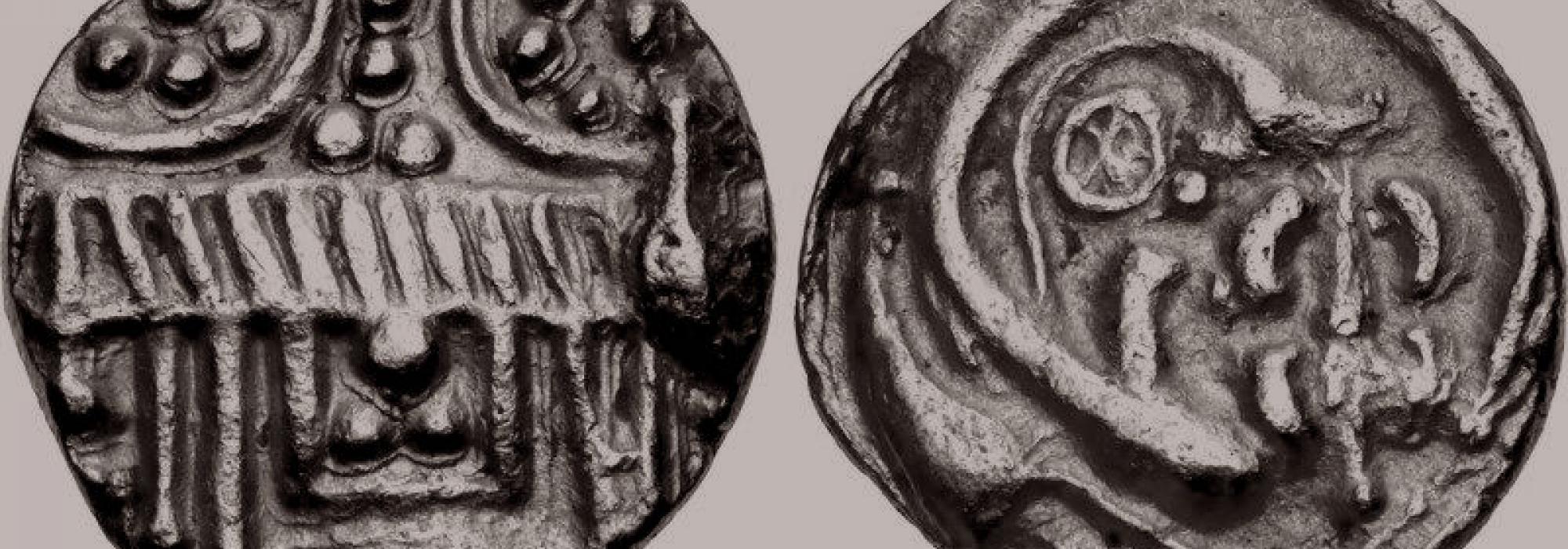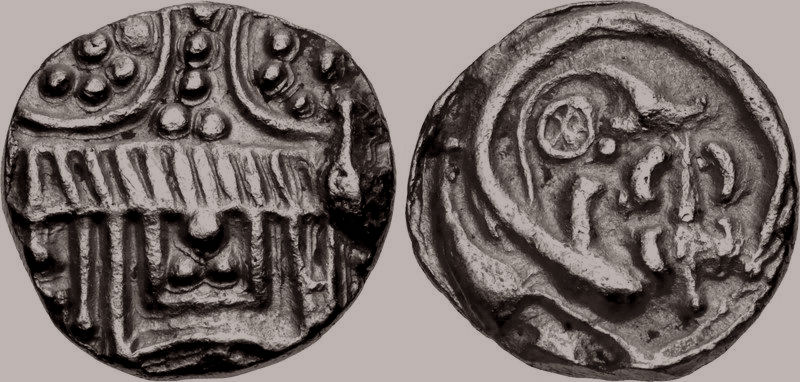Pre-eminent among the kings of Karnataka is the Kalyani Chalukya emperor, Vikramaditya VI. He was the son of Someshwara I. Fortunately, he had the poet Vidyapati Bilhana in his court and so his achievements have become immortal.
In his poetical work in eighteen cantos, Vikramankadevacharita, Bilhana records the life and achievements of Vikramaditya VI, who ruled for over fifty years and his long reign was marked by lasting peace. His son was Someshwara III who composed a unique work titled Rajamanasollasa. This is the first encyclopedia of Karnataka. Someshwara has asserted that a king must be knowledgeable in a hundred branches of learning. From this we learn that Indian kshaatra was not bloodthirsty, sectarian, and uncultured but rather a tradition that held as an ideal a collection of the wealth of knowledge and wisdom, aesthetic enjoyment and refined taste, rich mixture of emotions and intellect, as well as strength and strategy. This great treatise is a remarkable record of the cultural wealth that existed in Central India.
There are three great encyclopedias in Sanskrit:
(i) Brihatsamhita of Varahamihara (from the Gupta period)
(ii) Shivatattvaratnakara of Basavabhupala, the Keladi king
(iii) Rajamanasollasa (or Abhilashitarthachintamani) of Someshwara III. When his father Vikramaditya VI was ruling the empire for a long time and was occupied with administration, Someshwara III never made an attempt, although he was immensely capable, to usurp power like other treacherous princes who lust after the throne; instead, he set his mind on scholarly pursuits like composing this encyclopedia. This episode in our history shows the values of kshaatra upheld in our tradition.
Someshwara I, Vikramaditya's father, constantly battled the Pallavas and Cholas. He died during one such battle with them. But he had defeated even King Bhoja of Dharanagara! Vikramaditya did not have the support of his brothers. Even so, he expanded the Kalyani Chalukya empire all the way up to the River Narmada. He defeated several great emperors such as Karahata Bhoja,Chola Kulotthunga, and Hoysala Vishnuvardhana.
Further, he defeated royal lineages such as the Gangas, Kadambas, and Rashtrakutas, which had ruled over Karnataka for long periods. His wife Chandaladevi was a great scholar. Vijnaneshwara, the great dharmashastra expert who wrote the commentary Mitakshara on the Yajnavalkyasmriti lived in the court of Vikramaditya. His brother Kirtivarma wrote a treatise in Kannada titled Govaidya. Vikramaditya was not merely famous for his valour on the battlefield but also for being a great caretaker of his subjects. He helped his people in many ways and created a kingdom of peace and prosperity.
Vikramaditya's army general established the Itagi Mahadeva temple. Due to the beauty of its sculptures, this temple has been hailed as the 'emperor of all temples'!
At the fag end of his Mitakshara, Vijnaneshwara praises Kalyananagara and Vikramaditya VI in these words:
नासीदस्ति भविष्यति क्षितितले कल्याणकल्पं पुरम्।
नो दृष्टः श्रुत एव वा क्षितिपति श्रीविक्रमार्कोपमः॥
A town that epitomizes auspiciousness, Kalyananagara, never existed in the world before; it has no equal now and such a town will never exist in the future. Nobody had seen or heard of a king like Vikramaditya in the past.
It was during the reign of Vikramaditya VI that the war drums of Karnataka were heard in places as far away as Gujarat. That he never lost a war in his life has been recorded with great pride. He expanded his kingdom from Tiruchinapalli to the banks of the Narmada. That is half of modern-day Europe. There is a huge difference in the size of Vikramaditya's kingdom in comparison with that of Napoleon's or Hitler's. Yet, even in Karnataka, no great treatise has been written about him; and at the national level, he hasn't got the place he deserves in history. A country that ignores such a great kshatriya will never prosper.
Unlike Pulakeshi II, Vikramaditya VI boldly faced all family feuds and squabbles, quelling them completely. When his father, with the thought 'वीरभोज्या वसुन्धरा' wanted to hand over the reins of the kingdom to him, Vikramaditya refused; instead he offered it to his brother Someshwara II out of respect for his age and seniority. But ultimately, seeing the cowardly attitude of his elder brother as well as his disdain towards security, his arrogance, and his constant mischief, Vikramaditya overpowered him and threw him aside.
Similarly, in spite of the love and respect he showed his younger brother Jayasimha, by offering him positions of power, the ungrateful wretch rebelled against the king. With his unmatched valour, Vikramaditya defeated his audacious brother and hurled him in prison. Later, out of compassion, not only did he spare his brother's life, he also handed over the position to his nephew (i.e. Jayasimha's son), thus displaying great magnanimity and foresight. Several kings deeply admired the personality of Vikramaditya VI, who was renowned for his wisdom, courage, magnanimity, and ever-helpful nature. Due to Vikramaditya's help, King Jagaddeva of Malavadesha got back his kingdom that he had lost in a family feud. Kings like Jaggadeva offered their kingdoms to Vikramaditya, moved to his capital city, and lived there like his children -- we find references to this. When we see all this, we cannot but be impressed with the personality of Vikramaditya and cannot but notice the true nature of kshaatra.
Hoysala Vishnuvardhana
Yet another great king in this tradition of kshaatra is the Hoysala emperor Bittideva Vishnuvardhana. He expanded his kingdom from Tiruchirapalli until the River Krishna. He too was victorious is many wars. He built several Shiva temples, Vishnu temples, and Jain temples. The extraordinary Belur-Halebidu temples with their exquisite architecture and sculptures were a result of his encouragement. Some people opine that he converted to Srivaishnavism. That is not factually right. Vishnuvardhana is his original name. The word 'vishnu' is synonymous with bitti and bittiga, which are merely the tadbhava forms. This is just like how 'krishna' became 'kitti' or 'kittu.' Therefore, the whole story of this Jain king by name Bittideva converting to Srivaishnavism and changing his name to Vishnuvardhana is baseless. However, it is true that Bittideva greatly respected and honoured Ramanujacharya, who was his contemporary.
With a lot of foresight, Bittideva ensured that the infrastructure in all the towns of his kingdom was well established. His greatest accomplishment is that he, albeit unknowingly, laid the foundation that was needed for the Vijayanagara empire that came afterwards. Even today we find hundreds of Hoysala temples. The Hoysalas supported the construction of temples and sacred centres of all schools of thought.
Sevunas of Devagiri
The great force that we see next is that of the Sevunas. They are also called the Devagiri Yadavas. The Sevunas ruled over the region of modern-day Maharashtra. They were Kannadigas and adhered to Sanatanadharma. They belonged to the caste of cowherds and shepherds. They came from an extremely socially disadvantaged position. In fact, it is such people who have stood strong in our history.
Of the Devagiri Yadavas, the one who stands out is Singhana II (13th century CE). Singhana means 'simharaja' or lion-like king. He was a valorous hero. He defeated Shilaharabhoja and thrashed the Islamic invaders. From Gujarat to Goa, the entire western coastline was under his rule. He expanded his kingdom until Shivamogga in the south and Kurnool-Kadapa in the east. His chief minister Hemadri composed the dharma-shastric treatise Chaturvargachintamani
Hemadri was not only a prolific author, he was also responsible for the construction of wells, lakes, choultries, and so on. He established many new systems for land development, taxation, and collection of taxes. There are several legends about his magnanimity, compassion, and wisdom. The fondness that Singhana had for scholars and the splendour of Hemadri's genius gave Central India a glorious period in the post-classical era. These are excellent examples of the harmony between braahma and kshaatra. Bhaskaracharya's grandson Sharngadeva was also a member of Singhana's court. Apart from being a brilliant astronomer, he also composed seminal works on music, dance, literary compositions, and the study of musical instruments; after Bharata, it was he who has said many decisive things about these topics.
Until Singhana was alive, the Islamic forces could not go to the south of India. He stood like an impregnable fortress and protected the entire south of India. But the kings who came after him were weak and powerless.
Translated by Hari Ravikumar and Sandeep Balakrishna

















































